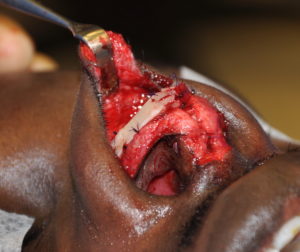The use of cartilage grafts in rhinoplasty are done for a wide variety of reasons. While all cartilage grafts add support, some of these effects are to improve the shape of the nose while others are to improve its breathing function. Of all cartilage graft placements, the nasal tip is the most common area in which they are used.
Cartilage grafts in the lower third of the nose are most frequently placed in the central tip area. Whether it is a columellar strut graft or a wide variety of tip augmentation/shaping grafts, increasing tip projection and/or support is critical to resist the potentially displacing effects of the overlying skin.
But the side walls of the nasal tip, or lateral alar regions, can occasionally need cartilage grafts as well. The lateral alar cartilages are responsible for keeping the nostrils more open for breathing and play a critical role in the shape of the nostrils as well. Extending from the tip down to the nasal base they encompass almost the full length of the nostrils like a spanning bridge. Weak lateral alar cartilages can result in their collapse when breathing in. This can often occur after a rhinoplasty when too much cartilage has been taken due to an aggressive cephalic trim.

Dr. Barry Eppley
Indianapolis, Indiana


